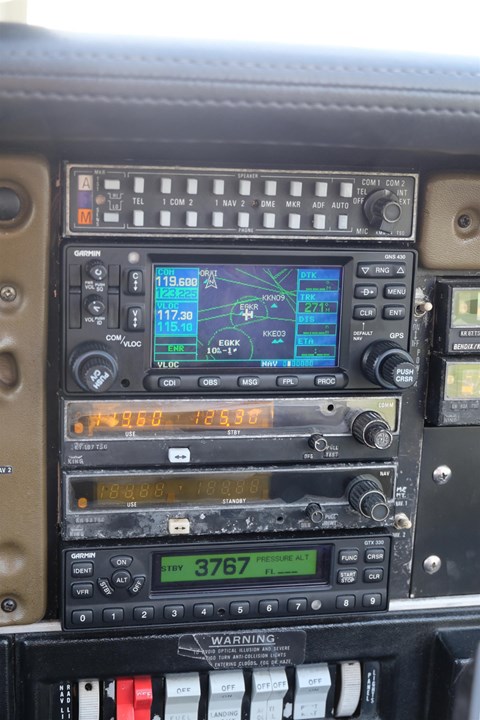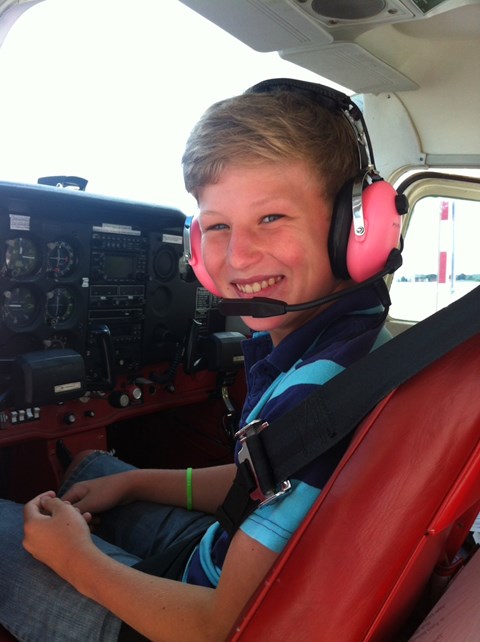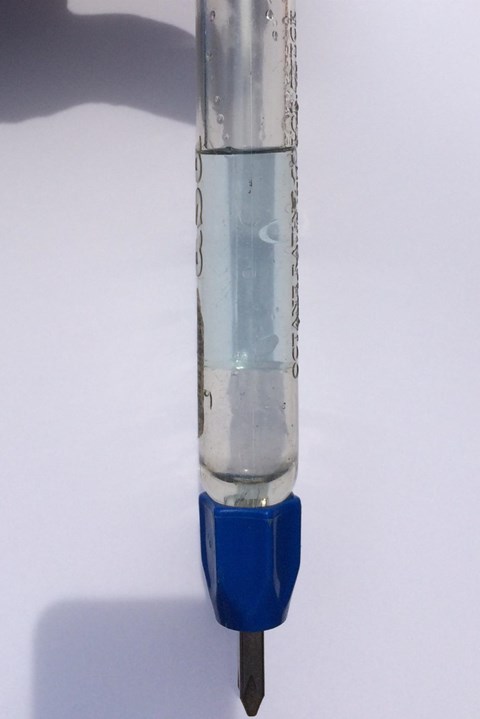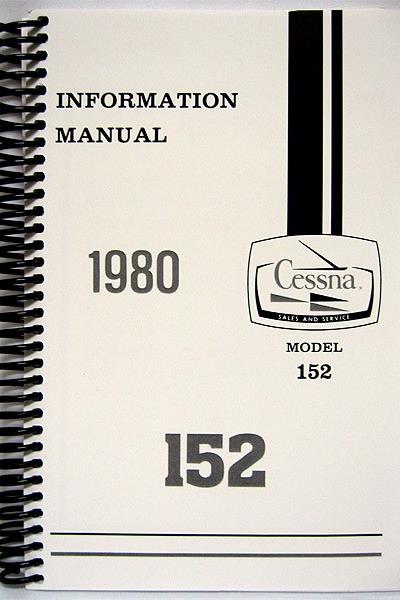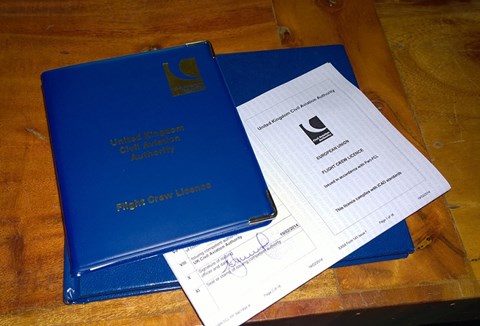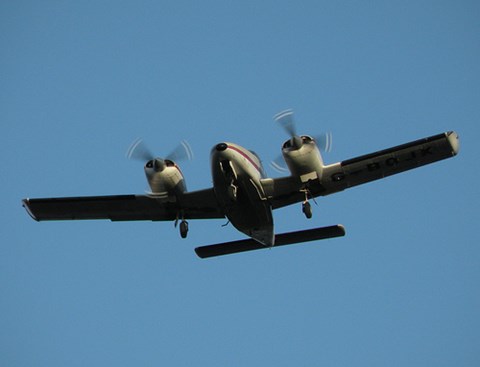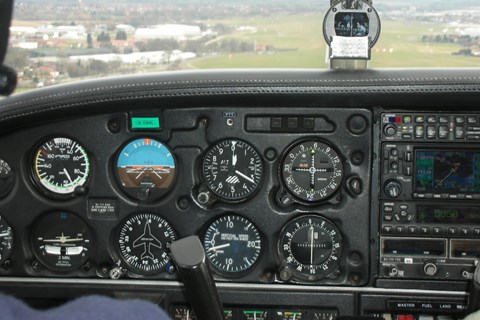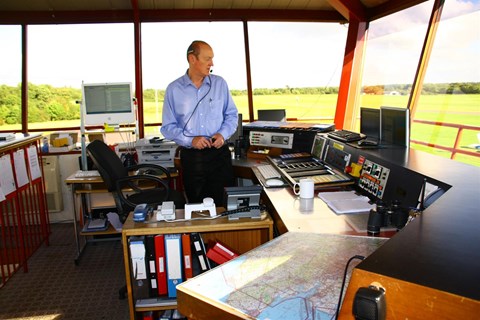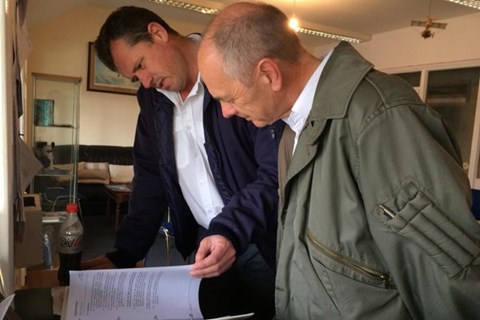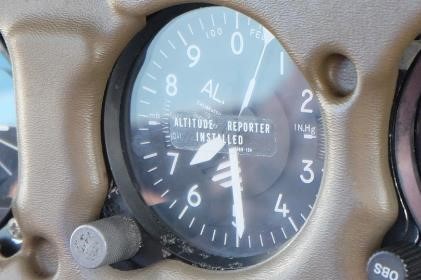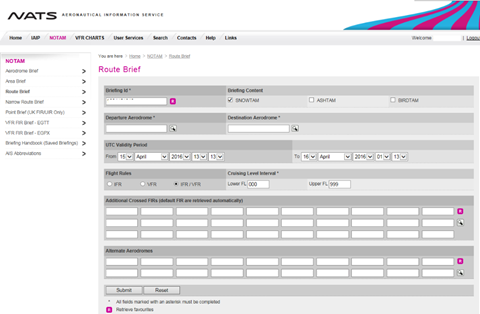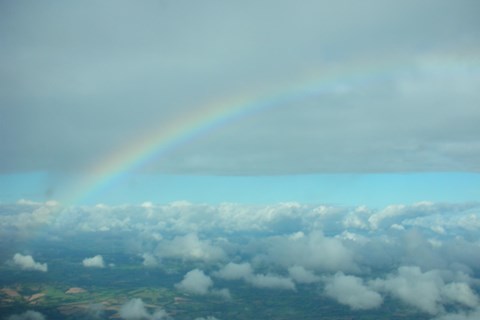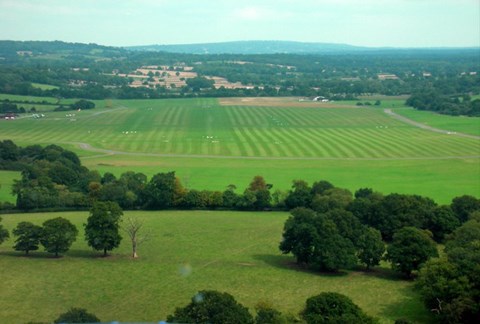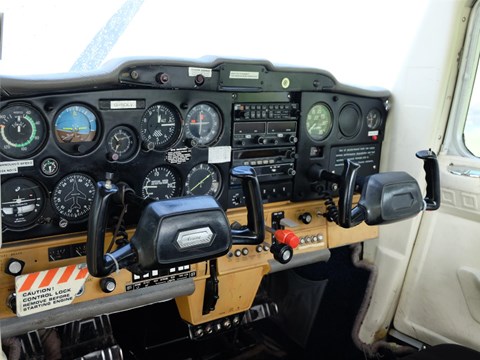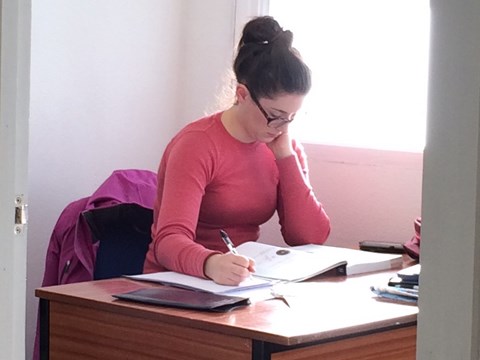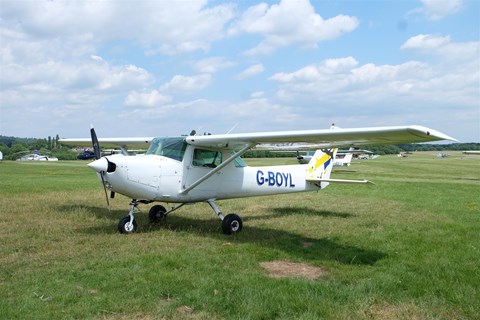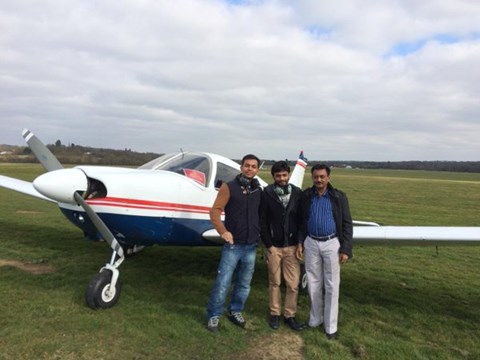What is an “EASA PPL”?
You will carry out a minimum of 45 hours’ flight training
including solo flights, navigation exercises and one 150 NM solo
qualifying cross county flight which incorporates a landing at two
different airfields.
Theory Exams:
There are nine written (multiple choice) exams:
- Air Law *
- Operational Procedures *
- Human Performance *
- Navigation **
- Meteorology **
- Communications
- Aircraft General Knowledge
- Principles of flight
- Flight Performance & Planning
* = Required before first solo flight
** = Required before first solo cross country
Practical Exams:
- Radio telephony
- Skills Test (akin to your driving test). We have our own on-site examiners.
- Before your first solo, you will be required to obtain a Class 2 Medical, carried out by a CAA registered doctor (known as an Aeromedical Examiner or “AME”). An AME is conveniently available for appointments at Redhill Aerodrome twice per week, and we would be pleased to give you further details.
We are able to supply all books and equipment required for the PPL course through our shop.
Preparation for the exams is all self-study, but we can provide ground school if you need assistance with a particular subject. Most problems are often overcome with a cup of tea and a briefing both before and after your lesson!
What is a “LAPL”?
Training for a LAPL (Light Aircraft Pilot’s Licence) has similar requirements to the EASA PPL, except the flight training time needed is a minimum of 30 hours with a shorter (100 NM) solo qualifying cross country flight.
The LAPL is not a licence recognised outside Europe. Other restrictions are that flights can only go ahead in good weather (known as VFR) and with no more than 3 passengers, plus a maximum aircraft weight of 2000Kgs.
The LAPL course comprises: 15 hours dual instruction 6 hours solo, of which 3 must be cross country 1 hour instrument flying 9 theory exams Practical radio exam Flight test with one of our examiners You will also need a medical from an approved GP – the medical required for a LAPL is less onerous than that for a PPL.
We are able to supply all books and equipment required for the LAPL course through our shop.
As with the PPL, preparation for the exams is all self-study but we can provide ground school if you need extra assistance with a particular subject.
What does “SEP” mean?
Single Engine Piston – i.e. an aircraft that has one piston engine.
PPL and LAPL licenses entitle a pilot to fly most SEPs, although the LAPL has an aircraft mass restriction. All our aircraft are within the SEP category.
Some very high performance SEPs require a type rating.
What is the minimum age for learning to fly?
You can start logging flight time from the age of 14, and are allowed to fly solo at the age of 16. This means that with a dedicated student, it is possible to achieve your licence on your 17th birthday!
We do have young students and can tailor a pre-planned training schedule to accommodate term-time/exams etc.
What are the differences between the C152 & Piper Archer?
They are both SEP class aircraft, and we use both for training.
| Cessna C152 | Piper PA28 Archer | |
| Number of seats | 2 | 4, subject to take off mass |
| Fuel feed | gravity-fed | mechanical & electric fuel pumps |
| Fuel tanks, in wings | 2, both feed into one | 2, require selecting |
| Fuel quantity | 99 litres, 93 litres useable | 50 usg total, 48 usg useable |
| Engine | flat 4 air cooled, 110 hp | flat 4 air cooled 180 hp |
| Fuel metering | carburettor | carburettor |
| Cruise speed | 85-90 Kts | 105-110 Kts |
| Flaps | electric, 3 stages | mechanical, 3 stages |
How long will it take to get my licence?
There is no real answer to this question – just as learning to drive, we all have different skills, attitudes and time, not to mention funds!
The majority of dedicated students will successfully complete their licence in the allocated time.
The more time you can allocate, the less you will forget between lessons. A positive attitude to the training will help enormously – which may include practicing checks etc. in your own armchair!
If you flew on average once a week, you should be able to complete your training in under a year. As you progress, lesson length will start at about an hour but will increase as the course progresses. Your Qualifying Cross Country flight will be about 3 hours.
However, we are dedicated to help you achieve your dreams in the least possible time.
Can I fly from Redhill all year round?
Yes you can, as Redhill has eight runways!
Six of them are grass and when weather conditions preclude their use, we can also use the tarmac runways. (These are restricted for use only when the grass runways are waterlogged).
Can I carry passengers?
If you wish to carry a passenger(s), you must have completed 3 take-off and landings in the type or class of aeroplane as handling pilot within the last 90 days.
If you have not met this requirement, recent rule changes allow you to fly with another pilot (who is licensed to fly the same type or class) by mutual agreement.
How often do I need to fly and how do I renew my licence?
Once you have your licence, it is current for two years. You have to fly at least 12 hours in the second year of your licence if you have a PPL, or 6 hours per year for a LAPL. 50% of this time is required to be P1.
During the second year, a minimum of one hour flight with an instructor is required for both licences.
Before the licence expires either the examiner (or under certain circumstances, the instructor) must update your licence and complete the appropriate CAA paperwork. This can be done within the last 45 days of the licence validity period. The licence CANNOT be retrospectively completed.
What does “MEP” mean?
Multi Engine Piston – i.e. an aircraft that has two or more piston engines.
MEPs mostly have engines mounted on the wings, although the Cessna 337 has one front and one at the back of the fuselage and the B-N Tri-Islander has a third on the tail section.
The Piper PA34 Seneca is a MEP.
An MEP rating requires renewing every 12 months.
What if I let my licence expire?
If you do not complete your hours’ requirement, we can arrange another skills test for you.
If you have left it too long, a modicum of training may be required. If your licence has expired by less than 3 years, our examiner can revalidate it immediately, but more than this you would have to take your licence to the CAA. Expiry of more than 5 years will also include navigation within the retest.
Recent changes allow certain instructors to sign your licence, examiners also remain as signatories.
Be aware that even if you have completed the flying requirements, if you forget to get it signed, it cannot be backdated.
What about Air Traffic Control?
We are probably unique in the UK for an airfield with grass runways as Redhill has a full Air Traffic Control service.
The 4 controllers work shifts to help keep us all safe.
Getting accustomed to an Air Traffic Control environment early on in training is a great bonus for students.
What does “ATIS” mean?
Aerodrome Terminal Information Service.
At Redhill this is transmitted on 125.3 MHz and is updated at 20 and 50 minutes past each hour, or if a significant change of weather or airfield information is required. Other airfields will have different frequencies for their ATIS, but not all aerodromes provide this service.
It is important to know that ATC at Redhill expect pilots to obtain this information before “booking out” or requesting joining instructions.
What is a “POH”?
Pilots Operating Handbook. This is a comprehensive publication detailing all the procedures required to safely operate the aeroplane. It is very similar to a car’s handbook, but all men please note: it is one set of instructions that you must read!!!
The book is divided into various sections which include how all aspects of the aircraft work, checklists, aircraft performance etc. We will guide you through as part of your training.
What does “VFR” mean?
VFR (Visual Flight Rules) are the rules or laws set out in the Air Navigation Order to which pilots must obey, similar to the Highway Code for drivers.
At Redhill (which is in Class D airspace) for a fixed wing pilot to fly, the visibility from the ground must be at least 5000m. You must also be able to avoid flying in cloud.
Outside Redhill’s ATZ, a PPL can fly in Class G airspace in a minimum of 3000m visibility. This can be reduced still further if the pilot has trained for additional ratings and are stated on their licence.
What is an “A” Check?
Part of an aircraft’s maintenance schedule is the first check of the day. This is to ensure that it is airworthy – i.e. fit to fly.
This check includes checking internally, externally, oil level, fuel quantity and a sample of the fuel to ensure it is not contaminated. The picture below shows a sampler with water at the bottom of the tube – water is heavier than fuel. The blue stained petrol is from a fuel tank, the water from a tap (for demonstration purposes)! The fuel is coloured blue to identify it as Avgas and also to make it easier to check for water.
The aircraft’s Tech. Log must be signed by whoever checks it. Remember, any flight may be considered as not insured if the Tech. Log is not so signed.
Does Redhill have radar, as it allocates a squawk?
The allocated squawk of 3767 is a “conspicuity code”, this means that the code is easily seen on adjacent radar controllers’ screens. From this information, the radar controller will know that Redhill is controlling that aircraft.
It is important to realise that the pilot is NOT receiving any form of ATC service derived from a radar source.
Many units will have a conspicuity code e.g London Information also allocate a code (1177) but no radar service is provided.
Why do we use checklists?
Several reasons. Firstly, for safety, checklists should be followed in order that essential items are not missed.
Secondly, aircraft manufacturers have specific checklists due to different systems.
If you fly more complex aircraft, or if you fly many different types, you would not be able remember all the checks required.
However, certain stages of flight, for example downwind & FREDA checks are memory items and need to be learned as soon as possible. Some of these can be found in “Downloads” under the training tab of this website.
We can provide aircraft-specific checklists.
Explain QNH / QFE / Flight Levels?
The QNH is a pressure setting which is set on the altimeter and indicates the “altitude” above MSL (Mean Sea Level).
Below certain altitudes, pilots should set QNH to provide a common reference to other aircraft and importantly around Gatwick and other airports, it indicates the base of controlled airspace.
If you land with QNH set at Redhill, the altimeter will indicate about 220’, which is Redhill’s altitude above Mean Sea Level.
Some pilots prefer to use “QFE” which indicates zero when on the ground, but this is longer encouraged or used very much. If used, QFE is referred to as a “height” for clarification.
QNH and QFE are set on the altimeters subscale in hectopascals, when the pressure is below 1000hPa, the word hectopascals shall be included in a transmission. American pilots still use inches of Mercury and many altimeters will display both scales.
The other pressure setting is called a “Flight Level”. This is normally set above 3000’ QNH, but around London this is 6000’. A setting of 1013.2hPa is used as a common reference. When reporting your “level”, the last two numbers are not stated – for example an altimeter showing 6500′ with 1013.2 is stated as “Flight Level 65”.
NOTAMS – what waypoints can I use for obtaining a route brief?
When using the NATS Briefing Service, unless you type in recognised waypoints, the system will not allow any further progress. The following are acceptable:
- VORs (3 letters)
- NDBs (2 or 3 letters)
- Airways reporting points (5 letters) e.g. ACORN, near Sevenoaks
- Range & bearing from a Navaid e.g. DVR025045 (Dover VOR, radial 025, distance 45NM). It must be written as in this example.
